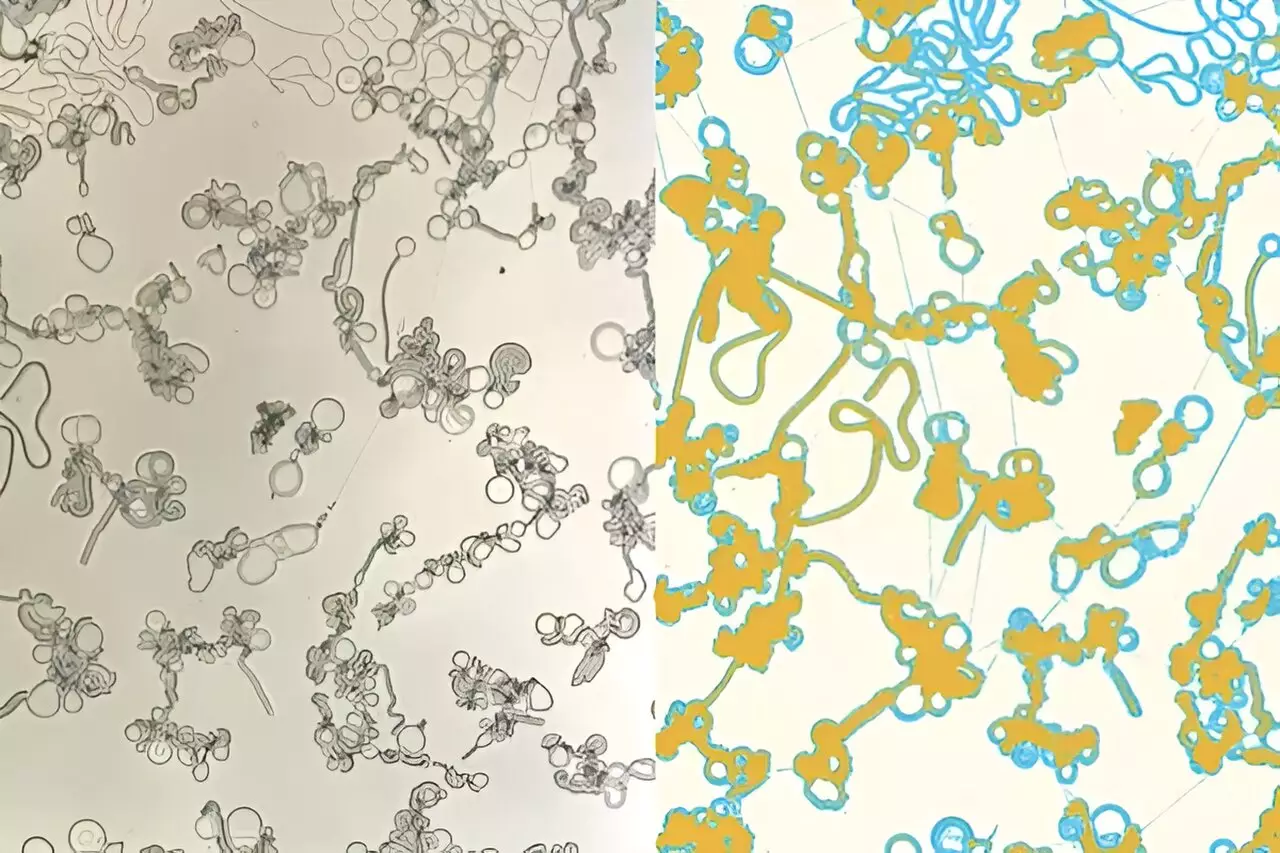Liquid crystals represent a remarkable state of matter that straddles the line between solid and liquid. Found in everyday technologies such as LCD screens, smartphones, and various electronic devices, their unique structural properties enable them to manipulate light in fascinating ways. However, recent research has uncovered a deeper potential in liquid crystals, one that could revolutionize materials science and our understanding of biological processes.
Research led by Chinedum Osuji at the University of Pennsylvania has unveiled astonishing new capabilities of liquid crystals. By effectively running electric currents through these materials, researchers not only produce colors but also generate intricate structures that can function like active transport systems. Unlike traditional liquid crystals, which merely change their optical properties under electric fields, Osuji’s group has observed spontaneous formation of filaments and discs that seem to operate similarly to biological systems, acting almost like a network of conveyor belts for molecular transport.
This newfound behavior emerged serendipitously during a study initially aimed at understanding mesophase pitch, a precursor material crucial for creating high-strength carbon fibers used in aerospace and high-performance vehicles. According to Osuji, these materials exhibit liquid crystalline properties at certain stages of processing.
The Serendipitous Discovery
As researchers conducted experiments with varying temperatures, they noted that when combining liquid crystal 12OCB with immiscible squalane, the expected phase separation did not occur through droplet formation, as traditionally anticipated. Instead, the liquid crystals formed complex, interconnected structures that were unexpected and compelling. This hypothesis was built upon observation: rather than separating into clean layers or droplets like oil and water, the liquid crystals manifested a dynamic interplay of filaments and bulged disks.
Yuma Morimitsu, a postdoctoral fellow in Osuji’s lab, played a critical role in documenting these phenomena. By adjusting the cooling rate and utilizing high-resolution microscopy, they were able to visualize the intricate behavior of the liquid crystals at a microscopic level. Their discoveries lead to a glimpse of a system that resonates with biological characteristics and behaviors.
What makes this discovery particularly intriguing is its potential implications for the fields of active matter and self-assembling systems. Traditionally disparate areas of study appear to converge with this phenomenon, suggesting a new category of active matter systems that could mimic biological processes. Active matter encompasses materials that exhibit motion or transport phenomena driven by internal or external stimuli—characteristics prevalent in cellular activities.
Christopher Browne, a postdoctoral researcher involved in the study, emphasizes how this finding bridges different realms of inquiry, facilitating deeper understanding of how material transport operates not just in engineered systems but within living cells as well. The filaments that form during phase separation can continuously absorb and transport molecules, akin to how cells shuttle nutrients or other compounds via biological channels, hinting at potential applications in biomimetic design.
Paving the Way for Future Research
The research team’s findings offer a fresh perspective on liquid crystals and spotlight an underexplored area of materials science. The ability of liquid crystals to self-assemble into functional structures could lead to innovative applications across various fields, including drug delivery, microreactor design, and advanced electronics. As they mimic biological systems, these liquid crystal-based functionalities may enhance our capacity to engineer responsive materials that can adapt to their environment or perform specific tasks.
The researchers also point out that renewed interest in liquid crystals could advance knowledge about their fundamental properties, potentially inspiring novel applications and methodologies. As Browne notes, industrial movements often lead foundational research to recede—a trend that may now be on the brink of reversal.
The study of liquid crystals is stepping beyond mere optical applications and delving into the intricacies of life-like properties and self-assembly. The capability of these materials to transport and order themselves opens new avenues for innovative scientific exploration. As interdisciplinary teams continue to study these exciting phenomena, the future may hold unexpected advancements that could reshape existing technologies and inform new biological analogies. The fusion of materials science and biological inspiration exemplified by this research stands as a testimony to the untapped potential still present within the realm of liquid crystals.


Leave a Reply